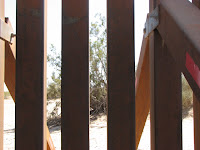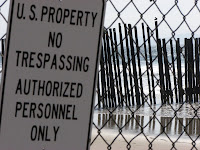At first I resisted reading Barbara Walters’ memoir based on its size alone. Audition runs a full 579 pages. Then, I started hearing people comment on the book. Their testimony didn’t just say it was good, their faces lit up at the mention of Audition saying it was marvelous! I finally decided to pull the weighty hardback off my husband Ed’s book shelf. Chapter by chapter, I came to know about Barbara Walters. I struggled through all the early chapters – the first 100 pages - on her growing up and her confessions of relationships with a string of boyfriends. I made it over that reading hurdle. Then, the last 479 pages captured my attention to the extent that I looked forward to curling up with this new bedtime read. On these pages, decades of news making events again came alive. Secret quirks of celebrities and heads of state were revealed. Barbara Walters honestly explored her personal and professional relationships along with the torments and the strains caused by her climb to incredible success. So now, I join those readers who say marvelous. And, I encourage you to enjoy the history, tantalizing facts, and relationship woes. You’ll find inspiration. Jump in to Audition.
Tuesday, March 31, 2009
Saturday, March 21, 2009
London Bridge in Arizona

I had doubts when new friends told me to visit the London Bridge in Lake Havasu City, Arizona. Sometimes I do fall for unlikely tales. Like the time I thought the Las Vegas blackjack dealer’s Mom really named him “Texas” (His name badge read “Texas”). And once – just once, I did go snipe hunting in Ligonier and felt disappointed that my friend caught one in a bag. (Later, I learned there are no snipes and a twisted gum band on a stick made the commotion in the bag.) Yes, I repeated “gullible” slowly numerous times to really see if I could make it sound like “fire truck”. (In my defense, how could my sweet daughter Suzie trick me? She did and belly laughed at my fruitless attempts.) So why would I believe the London Bridge is in Arizona! After all, I’d been to London in November 2008 and walked across the Thames River on the London Bridge. Now, I’m supposed to believe there’s a London Bridge in Arizona…
Truth is: The London Bridge is in Lake Havasu City. Ed and I visited the Bridge. We touched the Bridge. We walked under the Bridge. We watched the US and British flags atop the Bridge wave in the breeze. This was no joke.
The Colorado River now runs beneath the bridge that once spanned the Thames River. The London Bridge was purchased from the City of London on April 18, 1968 for $2,460,000. It took three years and more money – some $4,500,000 – to transport and rebuild the bridge in Lake Havasu City, Arizona. On October 10, 1971, the bridge project was compete. I should not have been so skeptical.
Desert Boondocking

As I stepped off the coach, my senses came alive. I inhaled the sweet scent of the desert wildflowers. The air reminded me of the many blended fragrances from the department store perfume testers – a pleasant smell. My eyes swept the landscape from the bright yellow mounds of flowers to the green saguaros cactus. These plants make a colorful contrast against the dull brown ground and backdrop of orange tinged, barren mountains. I walked around with wobbly steps. I could feel loose rocks push against the thin soles of my sandals. This lovely place would be our home for the night. No campground, no fee just the solitude of a pull off in the desert along Arizona Highway 95 somewhere between Yuma and Quartzsite.
The night sky grew black without the city lights. Eventually, the stars grew brighter and filled the sky. Some stars seemed to rest on the horizon; others formed familiar constellations overhead. In the morning, the crescent moon lingered in the blue sky. The sun poured blinding light over the eastern mountains.
We used our generator to cook breakfast of bacon, eggs, and coffee. We checked email using our Verizon wireless broadband access device. The connection showed five bars, that’s fast. We almost hated to leave this scenic spot. It ranked high in our Top 10 list of places we boondocked for just one night then continued along our journey.


Border Field State Park, California








“Tijuana…You do not want to go there now.” Ed and I heard this cautious advice from several officers of the U.S. Border Patrol.
“People on the Tijuana side of the fence throw rocks at us as we work every day; at night, they steal parts from our trucks and other heavy equipment. We have lights and security at night, but they continue to hamper our work and act as thieves.”This information came from contract workers constructing the U.S.-Mexican border fence along the Tijuana border.
“They kill each other every day in Tijuana. What do you need to go there for anyway, a few trinkets? Be safe, don’t go,” we heard from a biologist charged with monitoring the environmental impact of the border fence construction.
We encountered all these people and heard their comments when we visited Border Field State Park, or I should say what use to be the Park. Our Rand McNally Atlas has yet to catch up with the change, unless the closure of the park is temporary – no one on site could confirm the status and I did not call the State of California to ask. Ed and I saw the little green pine tree, an indication of a park according to the map legend, and followed the roadside park signs to the entrance.
A gate eventually blocked the park road. Huge dump trucks stirred the dust on roads cut into the distant hills bordering Mexico. A sign warned admittance for “authorized personnel only.”
Ed approached a man swigging water. He sat on a mountain bike resting from his exertion. He bitterly commented, “They (the authorities) have taken more and more of the park away as the fence is constructed. It’s all a matter of national security. Soon they’ll be nothing left of the trails I once enjoyed here.” After more questions, he pointed to the bullring and tower in the distance. “If you walk, you can get there.”
Ed polled several hard-hat construction workers. They all concurred. Driving around the gate would arouse the wrath of the Border Patrol. We would have to walk to really to see things here. And, that’s exactly what we did – walk.
My new hiking boots stabilized my ankles on the stony dirt road pocked with horse tracks from trail riders and tire trenches from assorted off-road vehicles. The road ran parallel to the border in the distance and ended on the sands of the Pacific Ocean shore. We turned from a westward course to a sandy route south toward the bullring and tower. Walking on the hard packed sand made the trek easier. We just had to stay far enough inland to avoid the unpredictable surf. Each time that I stopped to take an ocean photo or record a new angle of the Tijuana city view, Ed gained ground on me. Eventually, I caught up with him where the sign warned: “U.S. Property No Trespassing Authorized Personal Only.” We both stopped here.
El Toro bullring and the tower set on the crest of the hill. Behind it, the new border fence clearly defined the boundary between the U.S. and Mexico. The fence looked like a long-dark serpent that extended for miles along the hills. On the U.S. side, officers of the Border Patrol sat in jeeps peering through binoculars; some ran the hillsides on ATVs.
The tall metal rails of the fence extended into the ocean surf. Between the bars on the Mexican side, we could see people peering through the opening spaces, large enough to see people, but to narrow for more than an arm to reach through. One fellow climbed on the shoulders of a friend. The top of the fence still loomed over their heads. He gave me a friendly wave.
Stucco houses looked less than luxurious on the beach front. Tattered curtains waved in the ocean wind. The Tijuana hillside looked crowded with houses packed on top of each other. A Corolla Beer sign reminded me of how thirsty I felt from the longer than expected hike. Though tempting, my rational thoughts prevented me from asking someone on the other side to do a beer run for me.
When Ed and I turned to retrace our steps, a Border Patrol officer in a jeep came speeding at us. He’d been so attentive to the overland route; he had missed seeing us on the beach. He had missed seeing us near the fence. He hadn’t noticed us sitting on the sand or seen me photographing the fence or shoreline. He actually seemed startled to see us, so startled that Ed laughed and asked, “We you asleep? We’ve been here for at least 40 minutes and you didn’t see us!”
We all laughed, then, Ed asked for a lift back to our car. The expected answer was “No” and that’s what the officer said. When pressed, the officer admitted that he thought we had slipped across from Mexico. Our appearance confirmed our citizenships – U.S. and Canada. No ID was requested.
Our conversation with this officer revealed a couple of observations about the impact of the fence. First, the presence of the fence is deterring illegal crossings. He told us the numbers of crossings are less than in the past. And second, the fence will hurt families. People on the U.S. side would come to Border Field State Park to talk through the fence to family members and friends still living in Mexico. We hadn’t considered the latter factor, a sensitive and sad complication for tight family units.
As we headed back from the U.S. – Tijuana border, we were turning our backs to the issues: the border fence, immigration policy, and freedom to move between countries. No, I do not want to go any closer to Tijuana than I had come this afternoon.










































